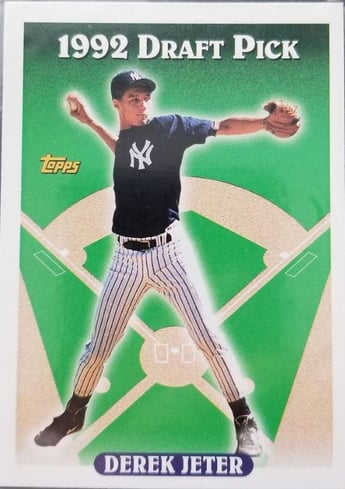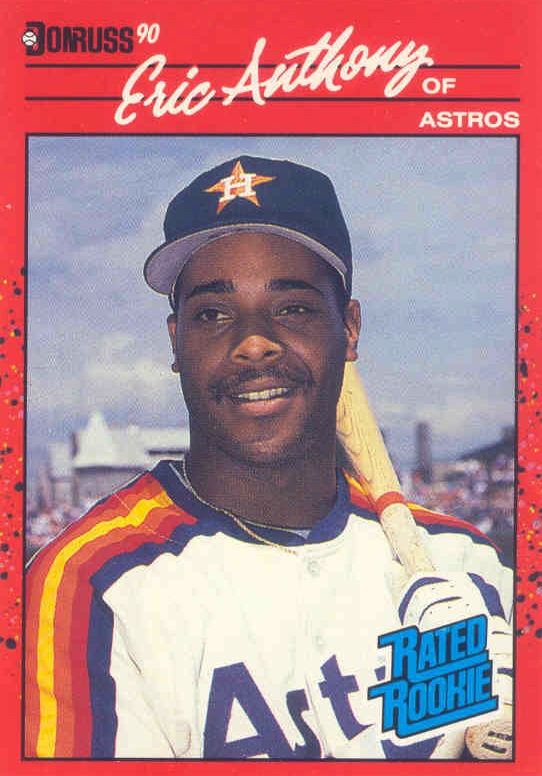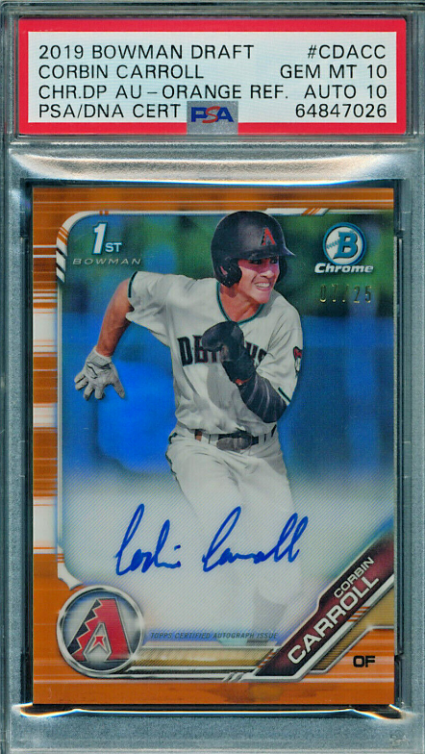
Investing in baseball cards is a popular hobby among collectors and investors alike. It offers a unique opportunity to own a piece of sports history while potentially making a profit. Among the various types of baseball cards, rookie cards are highly sought after due to their rarity and potential for appreciation in value over time.
However, investing in rookie baseball cards can be daunting for someone new to the market. This article will serve as a guide for rookies who want to invest in rookie baseball cards.
In this guide, we will explore the market for rookie baseball cards, key players and cards to look out for, how to determine a card’s value, tips for making smart purchases, and how to care for and store your collection. We will also discuss common mistakes to avoid when investing in rookie baseball cards.
By the end of this article, you will have a better understanding of the basics of investing in rookie baseball cards and be equipped to make informed decisions about your collection.
Understanding the Market for Rookie Baseball Cards
Analyzing the market for freshly introduced baseball cards is essential for comprehending the trends and patterns of the trading industry. One crucial aspect to keep in mind is player popularity. The more popular a player is, the higher the demand for his rookie card will be. Several factors can influence this demand, such as the player’s performance, achievements, and public image.
Thus, before investing in any rookie baseball card, assessing the player’s popularity and future prospects is important.
Another key factor to consider is the card’s condition. The better the card’s condition, the higher its value. This is where grading systems come into play. Grading systems provide a standard for evaluating the condition of a card and assigning a grade to it. These grades range from 1 to 10, with 10 being the highest grade.
Historical trends also play a part in determining a card’s investment potential. It is important to research past prices and sales trends to understand how a particular card has performed over time.
By considering these factors, investors can make informed decisions when investing in rookie baseball cards.
Identifying Key Players and Cards

This section offers insights into the identification of crucial players and cards for investment purposes in the realm of baseball card collecting.
Top rookie picks, rare finds, and investment potential are the key factors to consider when choosing which cards to invest in. The value of rookie cards is typically higher than those of veteran players due to their scarcity and potential for future success. As such, it is important to identify the top rookies for a given year and invest in their cards early on.
Card grading is also essential to consider when investing in rookie baseball cards. The condition of the card significantly impacts its value, and a higher grade can command a higher price. Additionally, historical significance can also increase the value of a card. Collectors highly sought-after cards belonging to players who have made significant contributions to baseball history.
Identifying key players, assessing their potential for future success, and considering the rarity, condition, and historical significance of their cards are all important factors to consider when investing in rookie baseball cards.
Determining a Card’s Value
Assessing the value of a baseball card involves a combination of factors that make it a complex task. Grading systems, for example, are crucial in determining the condition of the card and, therefore, its value. The PSA (Professional Sports Authenticator) grading system is one of the most widely used in the industry, with a scale that ranges from 1 (poor) to 10 (gem mint). The higher the grade, the higher the value of the card.
Another important factor is the scarcity factor. Cards that are difficult to find, either because they were produced in limited quantities or because they were distributed only in certain regions, are generally more valuable than those widely available.
Autographed cards are also highly sought after by collectors, as they add a personal touch to the item and make it unique. The value of an autographed card depends on the player’s popularity and the rarity of the signature.
Rookie card parallels, which are versions of the rookie card with different designs, colors, or materials, can also significantly increase the value of a card.
Finally, vintage vs. modern cards is an important consideration. Vintage cards, produced before the 1980s, are generally more valuable than modern cards because they are rarer and have historical significance. However, modern cards can also hold significant value, especially if they feature a highly sought-after player or have unique characteristics.
In summary, determining the value of a baseball card is a complex process that involves several factors. Collectors should consider grading systems, the scarcity factor, autographed cards, rookie card parallels, and vintage vs. modern cards when assessing a card’s value. By considering all of these factors, collectors can make informed decisions when investing in rookie baseball cards.
Tips for Making Smart Purchases
Acquiring a sound knowledge of the baseball card market, understanding the seller’s reputation, and being cautious while bidding can be beneficial in making informed purchases as a collector.
Before making any purchase, it is important to research sources that provide authentic information about the card’s value, rarity, and condition. One way to authenticate a card is by using a grading system. The most popular grading services in the market are Professional Sports Authenticator (PSA), Beckett Grading Services (BGS), and Sportscard Guaranty (SGC). These services evaluate the card’s condition, assign a grade, and seal it in a tamper-proof case.
Another crucial aspect to consider is the market trend. The card’s value may fluctuate depending on the demand, the player’s performance, and market conditions. It is important to keep track of the market trends and invest in cards with the potential for long-term growth.
A well-defined investment strategy can help make smart purchases and avoid impulsive decisions. In conclusion, being a smart collector requires knowledge, research, and caution.
By understanding the authentication process, grading systems, market trends, and investment strategies, collectors can make informed purchases and build a valuable collection over time.
Building a Diverse Collection

Building a diverse collection of sports memorabilia can enhance a collector’s appreciation of the history and culture of sports while also providing an opportunity to explore multiple facets of a particular sport or athlete.
When investing in rookie baseball cards, it is important to consider building a collection that consists of vintage and modern cards. While vintage cards are typically more valuable, modern cards offer the potential for growth and appreciation over time.
Another factor to consider when building a diverse collection is choosing between autographed and non-autographed cards. Autographed cards can hold significant value, especially if the autograph is from a top rookie pick or a legendary player. However, non-autographed cards can also be valuable if they are in excellent condition and come from a popular set.
It is also important to consider grading services when investing in rookie baseball cards, as this can significantly impact the value of a card.
Finally, niche collections can add a unique element to a diverse collection, as they can focus on a specific player, team, or era in baseball history.
Overall, building a diverse collection of rookie baseball cards can provide a well-rounded appreciation of the sport and its history while also offering the potential for growth in value over time.
Storing and Caring for Your Cards
Building a diverse collection of rookie baseball cards is just the first step toward becoming a successful investor. Once you have acquired a set of cards, the next important step is to ensure they are stored and cared for properly. Neglecting the storage and maintenance of your cards can lead to damage, which may significantly reduce their value.
In this subtopic, we will discuss various storage solutions, protective sleeves, display options, cleaning techniques, and preservation tips that can be useful for rookie baseball card collectors.
Storage solutions for rookie baseball cards can range from simple shoeboxes to elaborate storage cases. Regardless of the storage method, it is crucial to ensure that the cards are kept in a cool, dry place away from direct sunlight and moisture. Protective sleeves made of acid-free materials can be used to prevent cards from being scratched or damaged. Display options such as binder pages, top loaders, and snap cases can help showcase your collection while also providing additional protection.
Regular cleaning techniques such as using a soft-bristled brush and microfiber cloth can help remove dust and debris from cards. Finally, preservation tips such as avoiding touching the cards with bare hands and keeping them away from strong chemicals can help maintain the condition and value of your collection.
By following these storage and care tips, you can ensure that your rookie baseball card collection remains in excellent condition for future investments.
Selling Your Cards for Profit
The process of selling baseball cards for profit requires careful consideration of various factors, including market trends, potential buyers, and sales channels. One key element to maximizing profit is timing sales appropriately. This means understanding the ebbs and flows of the market and strategically selling cards during peak demand periods.
Conducting research on potential buyers is also important, as it allows sellers to tailor their marketing efforts to the interests and preferences of their target audience. Additionally, the grading process can significantly impact the value of a card, so it is important to accurately assess and communicate the condition of the cards being sold.
In today’s digital age, online marketplaces have become an increasingly popular sales channel for baseball card collectors. Platforms such as eBay, COMC, and Beckett Marketplace provide sellers access to a large pool of potential buyers, allowing for greater visibility and potentially higher profit margins.
Networking with other collectors can also be a valuable tool for selling cards, as it can lead to direct sales or referrals to interested buyers. By utilizing these various sales channels and strategies, rookie collectors can increase their chances of selling their cards for profit.
Common Mistakes to Avoid in Rookie Baseball Card Investing
After learning about selling your cards for a profit, it is important to understand common mistakes to avoid in rookie baseball card investing.
One of the most common mistakes is overvaluing hype. Just because a player is popular or has much media attention does not necessarily mean their rookie card will be worth a lot in the long run. It is important to research and analyze past trends in the market to make informed decisions.
Another mistake is ignoring the condition of the card. Even if a card features a popular player, if it is in poor condition, its value will decrease significantly.
Additionally, overlooking lesser-known players can be a mistake as well. These players may not have as much hype, but they can still have successful careers, and their rookie cards may become valuable in the future. It is important to evaluate players based on their potential for success, not just their current popularity.
Other mistakes to avoid include underestimating rarity and neglecting historical context. By being mindful of these common mistakes, investors can make more informed decisions when investing in rookie baseball cards.
Frequently Asked Questions
Are all rookie baseball cards worth investing in?
When considering investing in rookie baseball cards, it is important to acknowledge that not all cards are worth investing in. Several factors come into play when evaluating a card’s investment potential, including player popularity, rarity factor, condition evaluation, historical significance, and market trends.
It is crucial to conduct extensive research on the player and the card’s history, as well as the current market trends, to determine its potential value. The rarity of the card and its condition are also significant factors that can impact its value. Cards that are in pristine condition and have a low print run are more likely to increase in value over time.
Additionally, the historical significance of the player and the card can also impact its investment potential. As such, it is important to approach investing in rookie baseball cards with an analytical and objective mindset, carefully evaluating each card based on these factors before making any investment decisions.
How can I tell if a card has been tampered with or altered?
Detecting alterations in baseball cards is crucial for investors who want to avoid fraudulent sellers and preserve the original quality of their cards. Common tampering methods include trimming, re-coloring, and adding fake autographs.
To identify original quality, investors should examine the card’s corners, edges, surface, and centering. Seeking expert opinion from reputable grading companies can also help determine a card’s authenticity and value.
To avoid fraudulent sellers, investors should research the seller’s reputation and only purchase from trustworthy sources.
In summary, by being aware of common tampering methods and seeking expert opinion, investors can ensure they are investing in genuine, high-quality rookie baseball cards.
Should I invest in graded or ungraded cards?

When considering investing in baseball cards, one must decide whether to invest in graded or ungraded cards. Graded cards have been evaluated and assigned a grade by a third-party grading company, indicating the card’s condition and authenticity. Graded cards address authenticity concerns, as they have been examined for signs of tampering or alteration.
Rarity considerations are also important, as rarer cards tend to have higher values. Investment potential analysis should also be considered, as certain players or cards may appreciate in value more than others. Market trends impact the value of baseball cards, and it is important to stay informed of shifts in the market.
Ultimately, the decision to invest in graded or ungraded cards depends on the individual’s personal preferences and level of risk tolerance.
How long should I hold onto a card before selling it?
When deciding how long to hold onto a baseball card before selling it, several factors must be considered.
Market trends play a significant role in determining the optimal selling time for a card. It is crucial to monitor a player’s popularity in the league and how it affects the demand for their cards.
Additionally, card condition is an essential factor that can impact the value of a card over time. Historical sales data can be a valuable tool in predicting future value trends.
Personal investment goals should also be considered when deciding when to sell a card. It is essential to clearly understand the desired return on investment and the level of risk one is willing to take.
Overall, a thorough and analytical approach to evaluating these factors can help determine the best time to sell a baseball card.
How does a player’s performance impact the value of their rookie card?
The performance of a player can have a significant impact on the value of their rookie card. Player consistency is a crucial factor that investors should consider before investing in a rookie card. If a player consistently performs well over the years, the value of their rookie card is likely to rise.
Additionally, market trends can also influence the value of a rookie card. If a player gains popularity, their rookie card value can increase significantly. Furthermore, the condition of the card is critical when determining its value. Investors should ensure that the card is in excellent condition to maximize its value.
The rarity factor of the card also plays a crucial role in determining its value. The rarer the card, the higher its value. Lastly, the potential of a player can also influence the value of their rookie card. If a player has high potential and is expected to perform well in the future, their rookie card value can increase.
Therefore, investors must consider all these factors before investing in a rookie card.
Where is the best place to sell baseball cards?
There are several places to sell baseball cards, each with its own pros and cons depending on your specific needs and circumstances.
- eBay: This is perhaps the most common platform for selling baseball cards. With a worldwide reach, you can connect with numerous potential buyers. However, eBay does charge listing and selling fees.
- Sports Card Shops: Physical shops specializing in sports cards can be a good option. They often have knowledgeable staff who can provide an immediate appraisal of your cards, although they may not always offer the highest price.
- Sports Card Shows: For those in specific locales, like Elkhart, Indiana, connecting with local collectors could be a good option. It allows you to avoid shipping costs and fees from online platforms. If you want to sell baseball cards in Elkhart, Indiana, you may consider using our platform, iBuy.cards. We provide a user-friendly platform that connects sellers to buyers in your local area. For more information, [click here](insert your platform’s link here).
Remember, the best place to sell your baseball cards will depend on your specific situation, such as the cards’ condition and rarity, how quickly you want to sell them, and your comfort with online transactions. It’s always a good idea to explore multiple options to determine which suits you the best.
Conclusion
Investing in rookie baseball cards can be a lucrative venture for those with a keen eye for value and a passion for the sport. However, success in this market requires an understanding of the market, the ability to identify key players and cards, knowledge of card values, and the ability to make smart purchases. Building a diverse collection, storing and caring for cards properly, and knowing when to sell are also crucial factors in achieving success in the rookie baseball card investment market.
To begin, it is important to do your research and understand the market for rookie baseball cards. This includes familiarizing yourself with key players and their respective cards and understanding the factors that influence card value. It is also important to have a strategy for making purchases, such as buying cards that are undervalued or investing in up-and-coming players.
Once you have built your collection, proper storage and care is essential to preserving card value. Investing in protective sleeves, avoiding exposure to direct sunlight and moisture, and handling cards with care can all help to maintain the quality of your collection.
When the time comes to sell, knowing when to do so and where to sell can also significantly impact your return on investment.
Overall, investing in rookie baseball cards can be a profitable and enjoyable hobby for those who are willing to put in the effort to understand the market and make smart choices. With careful research, strategic purchases, and proper care and storage, a diverse collection of rookie baseball cards can provide both financial and personal rewards for years to come.
